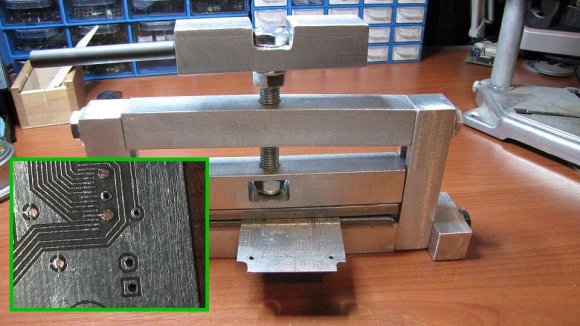
The image to the left doesn’t make this look like much, but inside of the cardboard vending machine lives a clever Rube-Goldberg device. The video after the break gives a look at the inner workings to show how a quarter manages to dispense a full can of Coke. But that’s about all the detail we get on the project.
There are two sets of counterweights used in the design. Some marbles, and what look like giant pinballs. The coin chute, located on the left side of the venting machine, funnels the money into the waiting marble. When the marble rolls off it lands on a spoon. The weight rotates the spoon-filled disk and causes one of the waiting pinballs to drop from their rack. As that metal ball falls it operates a ratcheting system to dispense just one can. It looks like the capacity of the machine is limited to two refreshing cans of sugary liquid, but that could be scaled up if more room were made for cans and counterweights alike.
Continue reading “Rube-Goldberg Provides Liquid Refreshment”












